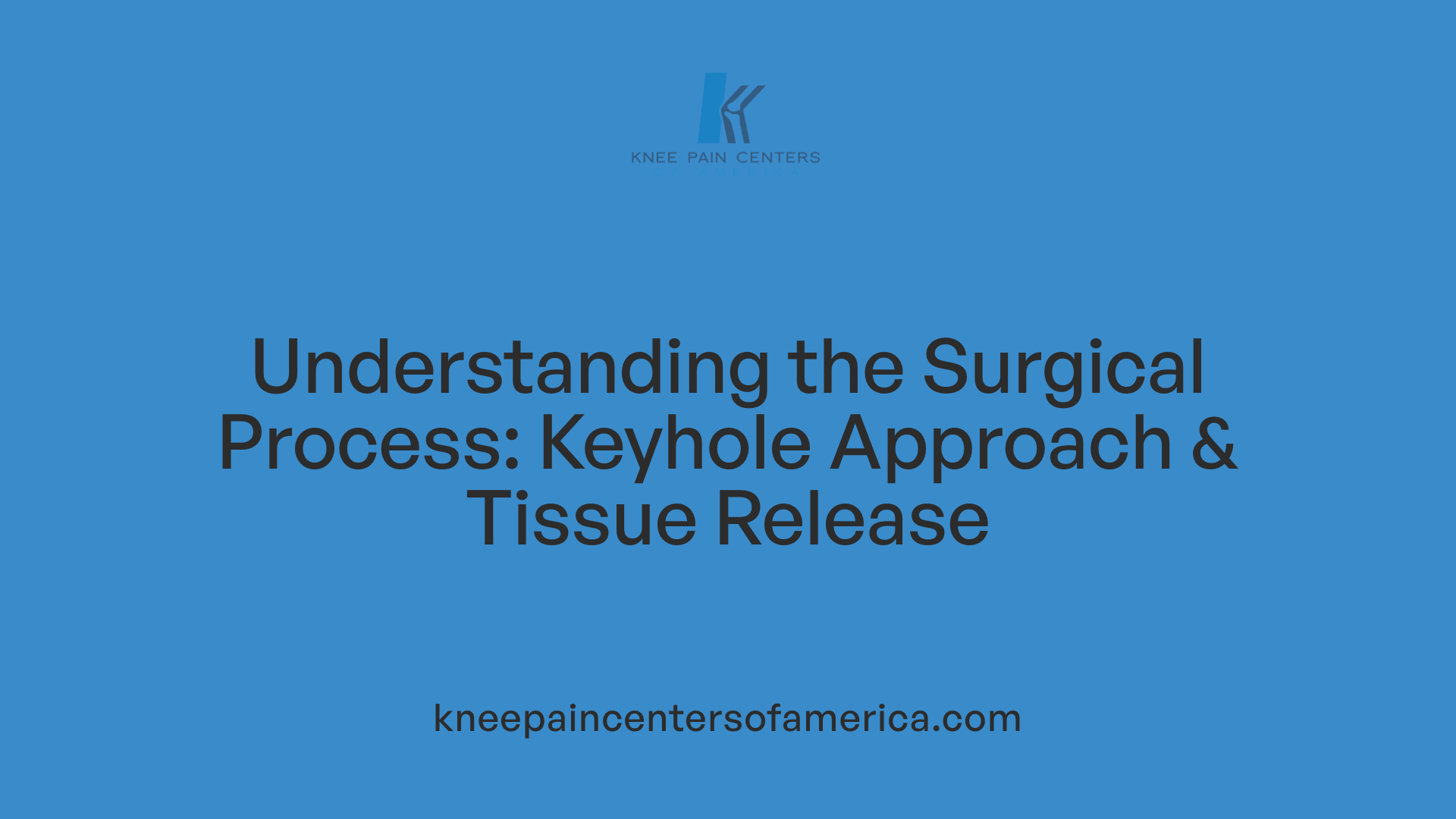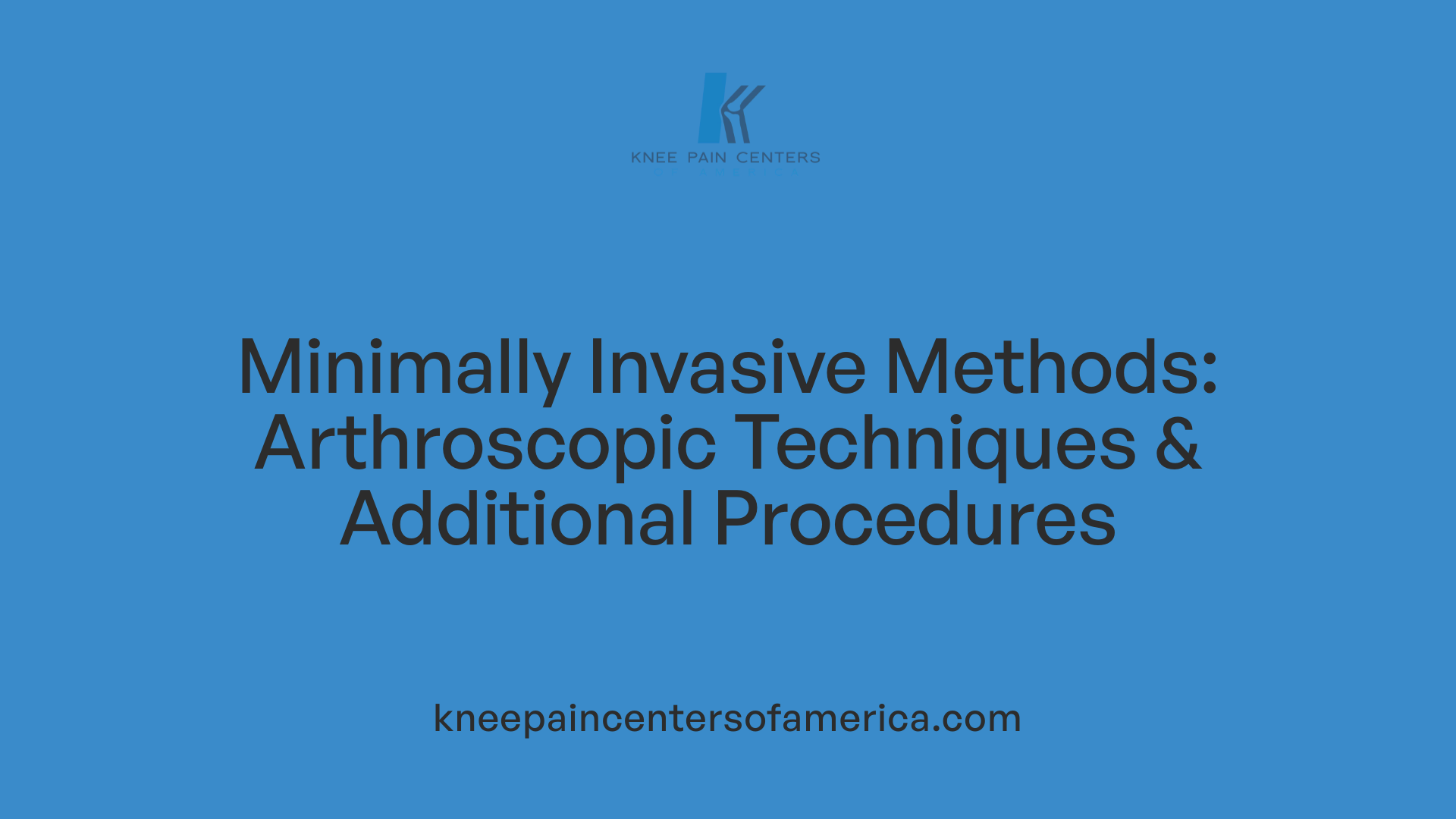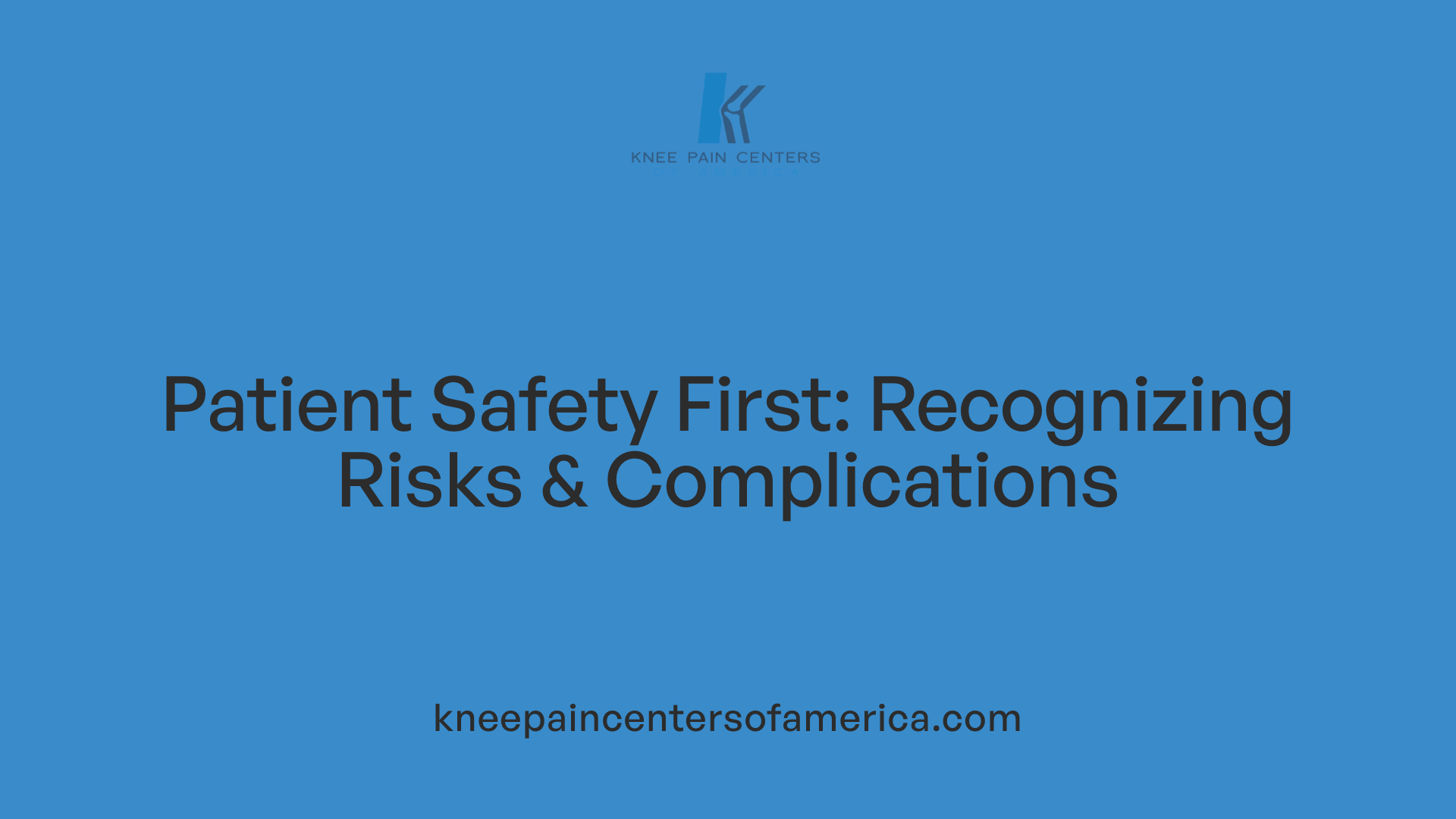Understanding Lateral Release Surgery: A Path to Knee Pain Relief
Lateral release surgery is a minimally invasive procedure designed to correct issues with patellar alignment, often causing pain, instability, or maltracking. This article explores the intricacies of the procedure, indications, techniques, risks, recovery, and expected outcomes, providing a comprehensive guide for those considering or recommended for this surgery.
What Does Lateral Release Surgery Involve?

Procedure details
Lateral release surgery is a minimally invasive procedure designed to improve the alignment of the kneecap, or patella. It involves making small incisions around the outer side of the knee, through which an arthroscope and surgical tools are inserted. The surgeon then releases or cuts the tight tissue, known as the lateral retinaculum, which pulls the kneecap outward. This release helps the patella move more centrally within the femoral groove, reducing pain and improving knee stability.
Surgical approach
Performed as an outpatient procedure, lateral release is most often done arthroscopically, also called keyhole surgery. The surgeon carefully cuts through the lateral retinaculum from inside the knee, avoiding large open incisions. The goal is to alleviate tension on the patella without damaging surrounding structures.
Anesthesia used
The surgery typically requires general anesthesia, ensuring the patient is completely unconscious and free of pain during the procedure. This approach provides the surgeon with optimal control and safety, allowing precise tissue release.
Goals of the surgery
The primary aim of lateral release surgery is to correct patellofemoral malalignment caused by tight lateral soft tissues. By releasing these tissues, the kneecap can sit properly within its groove, reducing abnormal pressure, pain, and instability. Ultimately, the procedure seeks to restore normal movement, alleviate symptoms, and prevent future dislocations or cartilage damage. Postoperative recovery includes wearing a knee brace, partial weightbearing, and targeted physical therapy to regain strength and full function, with many patients experiencing significant improvement within a few months.
Indications and Suitable Candidates

What are the indications for lateral release surgery?
Lateral release surgery is mainly recommended for patients suffering from patellar maltracking caused by tightness or abnormal tilt of the kneecap. When the lateral retinaculum — a band of tissue on the outside of the knee — is excessively tight, it pulls the kneecap outward, leading to misalignment or dislocation.
This procedure is especially useful in cases of lateral patellar compression syndrome, where the patella is pressed against the outer part of the knee joint, causing pain and cartilage wear. It is also beneficial for patients with a patella that tilts or rides laterally, contributing to symptoms like pain, irritation, and instability.
However, caution should be exercised when considering lateral release for patients with lateral facet arthritis or those without significant tightness or tilt, as it might worsen these conditions. Overall, the surgery aims to relieve lateral soft tissue constrictions that hinder normal patellar movement, especially when conservative treatments have failed.
What criteria determine a patient's eligibility for lateral release surgery?
Eligibility for lateral release surgery hinges on several factors. First, the patient should experience persistent anterior knee pain that does not improve with non-surgical interventions such as physical therapy, bracing, medications, or activity modifications.
A comprehensive diagnosis involves reviewing medical history, conducting physical exams, and using imaging techniques like X-rays, MRI, or CT scans. These help confirm that tight lateral soft tissues are contributing to the symptoms and that no other structural issues require different interventions.
Candidates typically undergo an assessment to ensure their maltracking or dislocation stems from lateral tightness rather than other underlying problems like significant malalignment or ligament instability. Surgery is usually planned when conservative approaches fail to alleviate symptoms but the diagnosis supports a lateral retinacular tightness as the main cause.
Proper patient selection is crucial to avoid complications and ensure that the surgery provides the intended relief. Patients should understand the postoperative rehabilitation process and potential risks involved.
| Aspect |
Criteria |
Additional Notes |
| Symptom Duration |
Persistent knee pain despite conservative therapy |
Symptoms lasting several months to a year |
| Medical Evaluation |
Confirm lateral patellar tightness or tilt |
Use of imaging and physical exam |
| Prior Treatments |
Non-surgical methods attempted |
Bracing, physiotherapy, medications |
| Structural Findings |
Lateral tightness or maltracking on imaging |
No significant arthritis or instability |
| Patient Understanding |
Willingness to adhere to rehab |
Critical for optimal recovery |
Surgical Procedures and Techniques

What surgical techniques are used during lateral release surgery?
Lateral release surgery is typically performed arthroscopically, known as keyhole surgery, which involves making three small incisions around the knee. This approach allows the surgeon to insert an arthroscope— a tiny camera— and surgical tools into the joint for minimally invasive treatment.
The primary goal during the procedure is to access and incise the lateral retinaculum, the tight band of tissue on the outside of the kneecap. By cutting through this tissue, the tension on the patella is reduced, enabling it to shift more naturally within its groove. This realignment helps alleviate pain caused by lateral pulling or maltracking.
In some cases, additional surgical procedures are performed to further correct patellar alignment and stability. These may include medial patellofemoral ligament reconstruction to improve medial support or tibial tubercle osteotomy to better align the kneecap’s tracking.
Postoperative management involves support such as a knee brace locked at 30 degrees of flexion to limit movement and facilitate healing. Patients are encouraged partial weight bearing using crutches and participate in structured physical therapy to regain strength and range of motion.
Overall, the surgical aim is to release lateral tension, improve patellar position, and restore proper knee function, with most procedures performed as outpatient surgeries for minimal invasiveness.
Risks, Potential Complications, and Safety Considerations

What are the risks and potential complications of lateral release surgery?
Lateral release surgery is generally safe but involves some risks that patients should be aware of. In the short term, common complications include bleeding into the knee joint, known as hemarthrosis, which may cause swelling and discomfort. There can also be skin burns resulting from cautery used during surgery, especially if not carefully controlled.
Technical errors during the procedure can impact outcomes significantly. Excessive release of the lateral tissues can lead to medial patellar instability or subluxation, where the kneecap shifts inward too much. Conversely, an insufficient release may not relieve symptoms effectively. Other errors include not adequately controlling bleeding vessels, leading to persistent hemarthrosis, or causing skin burns.
Longer-term, some patients might experience weakening of the knee's extensor mechanism, which could reduce strength or function. Over-release may lead to medial instability, making the kneecap prone to dislocation or subluxation. There is also the possibility that the procedure might not fully alleviate pain or discomfort, especially if the patient's underlying issues were not correctly diagnosed.
Additional risks include nerve injury, which can cause numbness or sensory changes around the knee, and persistent pain or discomfort. Failure to follow appropriate surgical techniques or select suitable candidates for the procedure can increase the likelihood of these adverse outcomes.
Overall, understanding these risks helps inform decision-making and emphasizes the importance of choosing experienced surgeons and comprehensive preoperative evaluations.
Recovery, Rehabilitation, and Patient Expectations

What should patients expect during recovery and rehabilitation after lateral release surgery?
Following lateral release surgery, patients typically begin an initial period of rest. Crutches are usually used for the first 2 to 3 weeks to assist with weight-bearing as tolerated. Ice application is frequently recommended to help control pain and reduce swelling around the knee.
Postoperative care also involves keeping the surgical incisions clean and dry. Patients are advised to avoid baths for at least two weeks to minimize risk of infection. As healing progresses, they will gradually start a structured physiotherapy program designed to restore knee motion, strength, and overall function.
Physical therapy exercises may include patellar mobilization, stretching, and quadriceps strengthening. Early phases focus on gentle range of motion and reducing swelling, while later stages incorporate weight-bearing activities and functional movements.
Progress is typically reviewed during scheduled follow-ups, with specific milestones set at various weeks post-surgery. Most patients are encouraged to avoid strenuous activities until adequate healing is achieved.
Pain medications are used as prescribed, and activity modifications—such as avoiding heavy lifting or high-impact sports—are crucial during recovery. Patients often experience significant improvement in knee stability and pain by around three months.
Full recovery, including return to sports or high-demand activities, can take between 3 to 6 months. Optimal healing relies on adherence to rehabilitation protocols and careful monitoring for signs of complications.
Patients should watch for symptoms like increased swelling, persistent pain, redness, or signs of infection. Prompt medical consultation is advised if any concerns arise. Consistent follow-up with healthcare providers ensures a smooth recovery process and helps achieve the best possible functional outcomes.
Expected Outcomes and Benefits
What are the expected outcomes and benefits of lateral release surgery?
Lateral release surgery is designed to improve knee conditions by correcting patella malalignment and reducing lateral pressure on the kneecap. Patients often experience notable relief from pain and enhanced stability of the patella. This procedure helps to decompress the lateral facet of the patella, which alleviates discomfort caused by its improper tracking.
In the short term, many patients report decreased knee pain and improvements in assessment scores such as the Lysholm and Kujala scales. These scores are used to evaluate knee function and symptoms, and positive changes indicate better mobility and reduced discomfort. Most individuals are able to resume light activities within a few weeks after surgery.
Long-term, patients benefit from improved knee stability and functional capacity. When performed correctly and with appropriate postoperative care, lateral release can result in sustained improvements for up to a year or longer. It helps prevent further dislocations or subluxations, thereby reducing the likelihood of ongoing joint damage.
However, the success of the surgery largely depends on proper patient selection, surgical technique, and adherence to rehabilitation protocols. Risks such as medial patellar instability, hemarthrosis, or unsuccessful correction must be carefully managed.
Overall, the procedure shows promising results in enhancing quality of life by reducing pain, stabilizing the patella, and improving overall knee function. Patients often experience a significant step toward restoring normal activity levels and minimizing discomfort.
| Aspect |
Expected Outcome |
Additional Details |
| Pain relief |
Yes |
Often noticeable within 3 months post-surgery |
| Patellar stability |
Improved |
Decreased lateral subluxation or dislocation risk |
| Knee function |
Enhanced |
Increased mobility and strength |
| Assessment scores |
Increased |
Better Lysholm and Kujala scores |
| Long-term benefits |
Sustained |
Better joint stability and reduced symptoms |
These benefits highlight the importance of correctly indicated latereal release surgery for suitable candidates, maximizing the potential for a successful recovery and improved knee health.
Moving Forward After Lateral Release
Lateral release surgery is a valuable minimally invasive option for patients suffering from patellar maltracking, tilt, and associated pain when conservative treatments fail. Proper candidate selection, meticulous surgical technique, and comprehensive rehabilitation are key to achieving optimal outcomes. As with any surgical intervention, understanding the potential risks and benefits and adhering to postoperative instructions are critical for success. With appropriate management, patients can expect significant improvement in knee stability, function, and quality of life, often returning to their daily activities within a few months.
References